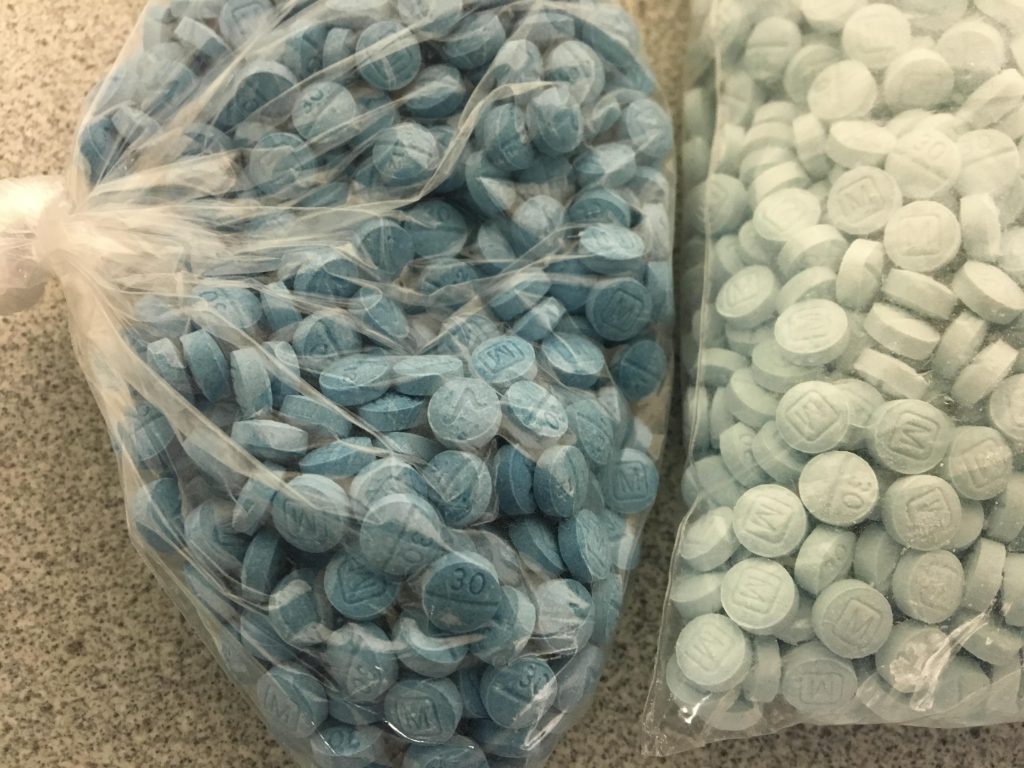Spike In Deaths Points to Tainted Local Drug Supply
Milwaukee County has averaged one overdose death every four hours since Saturday.
There has been an explosion in drug-overdose deaths in Milwaukee County since Saturday, with approximately 17 deaths suspected to be caused by drug overdoses.
A group of government health officials and first responders held an emergency press conference Tuesday to sound the alarm that the past three days may indicate that Milwaukee’s drug supply has been tainted, to a higher degree than before, with deadly synthetic opioids like Fentanyl and others.
“They’re putting it in everything, it’s like the Red Hot sauce,” said Milwaukee Fire Department Chief Aaron Lipski.
Like the rest of the U.S., metro Milwaukee has been struggling against the opioid epidemic and increasing numbers of deaths due to drugs like Fentanyl. But since Saturday, officials have seen the average number of overdose deaths go from one every 16 hours to one every four hours. Dr. Ben Weston, chief health policy director for Milwaukee County, said the emergency medical services system has also experienced “increased activity” with non-fatal overdoses being brought to emergency departments. “That tells us these deaths are just the tip of the iceberg,” he said.
Lipski said a “huge amount” of the deaths have occurred in the City of Milwaukee, specifically the city’s South Side, and also in South Milwaukee and West Allis.
Beyond the increase in deaths, the demographics of the victims in recent days has also shifted from the mean. Sara Schreiber, technical forensic director of the toxicology lab at the Milwaukee County Medical Examiner, said the general demographic data of the deaths in recent days shows that it’s more men than women, more white than Black, and that the victims, on average, are older than usual. Though the age of the victims has ranged from those in their 20s to their 50s.
The toxicology for most of the recent deaths has not been completed, Schreiber said. But given that Fentanyl has usually been present in overdose deaths in recent years, Weston said, “I would bet these overdose deaths contain Fentanyl,” noting it has become a common additive in street drugs.
Joshua Parish, assistant Milwaukee fire chief, also said high-potency opioids are showing up in combination with many other non-opioid drugs. “What we hear a lot is ‘I didn’t buy an opioid; I didn’t intend to use an opioid’.” Parrish said the drug is being found in stimulants like meth and cocaine, as well as depressants.
“Everyone knows someone who is a minute, or an hour or a day from being exposed to a high-potency opioid,” Parrish said.
Something else that is increasingly appearing in toxicology, and always in the presence of Fentanyl, is a tranquilizer called Xylazine, Schreiber said. The drug is particularly dangerous when mixed with opioids as its effects cannot be reversed by Narcan, an emergency medication that reverses the effects of opioids. Schreiber said Xylazine was present in 10% of overdose deaths in 2022, and so far in 2023, the data shows its presence in 35%. Both figures are a dramatic increase from just three years ago when the tranquilizer was present in approximately 1% of overdose deaths.
Officials are pleading with the community to access and share harm-reduction tools like drug testing kits and Narcan. Harm reduction kits can be found at many fire departments around the county, Weston said. The City of Milwaukee fire department has HOPE Kits, which include two Fentanyl test strips, two Narcan nasal sprays and a CPR-mask. The kits are available at any fire station, police station or fire truck in the community — no questions asked.
“This represents the only hope we have when the entire system has failed and the person is overdosing,” Lipski said.
Officials are also saying that 911 should always be called in the event of an overdose, even if the effects have been successfully reversed with Narcan. Schneider explained that Narcan will wear off faster than the drugs that caused the overdose. Assistant Chief Parrish said paramedics can “administer additional antidotes or support an individual’s respiratory drive, which is a fancy way of saying our paramedics can breathe for you if you can’t breathe for yourself.”
If you think stories like this are important, become a member of Urban Milwaukee and help support real, independent journalism. Plus you get some cool added benefits.
More about the Opioid Crisis
- Attorney General Kaul Announces Consent Judgment with Kroger Over Opioid Crisis - Wisconsin Department of Justice - Mar 21st, 2025
- Baldwin Votes to Strengthen Penalties, Step Up Enforcement Around Deadly Fentanyl - U.S. Sen. Tammy Baldwin - Mar 17th, 2025
- Wisconsin Communities Get Millions From Opioid Settlement as Deaths Decline - Evan Casey - Mar 1st, 2025
- MKE County: County Creates Easy Public Access To Overdose Data - Graham Kilmer - Feb 18th, 2025
- Milwaukee County Executive David Crowley and the Office of Emergency Management Launch New Overdose Dashboard - County Executive David Crowley - Feb 18th, 2025
- Fitzgerald Advances Legislation to Fight Opioid Epidemic - U.S. Rep. Scott Fitzgerald - Feb 6th, 2025
- Milwaukee Is Losing a Generation of Black Men To Drug Crisis - Edgar Mendez and Devin Blake - Jan 31st, 2025
- Milwaukee County’s Overdose Deaths Declined For Second Straight Year - Evan Casey - Jan 27th, 2025
- MKE County: United Community Center Awarded Drug Company Money For Addiction Treatment - Graham Kilmer - Jan 12th, 2025
- DHS Provides Update on Distribution of Latest Opioid Settlement Funds - Wisconsin Department of Health Services - Jan 9th, 2025
Read more about Opioid Crisis here

























